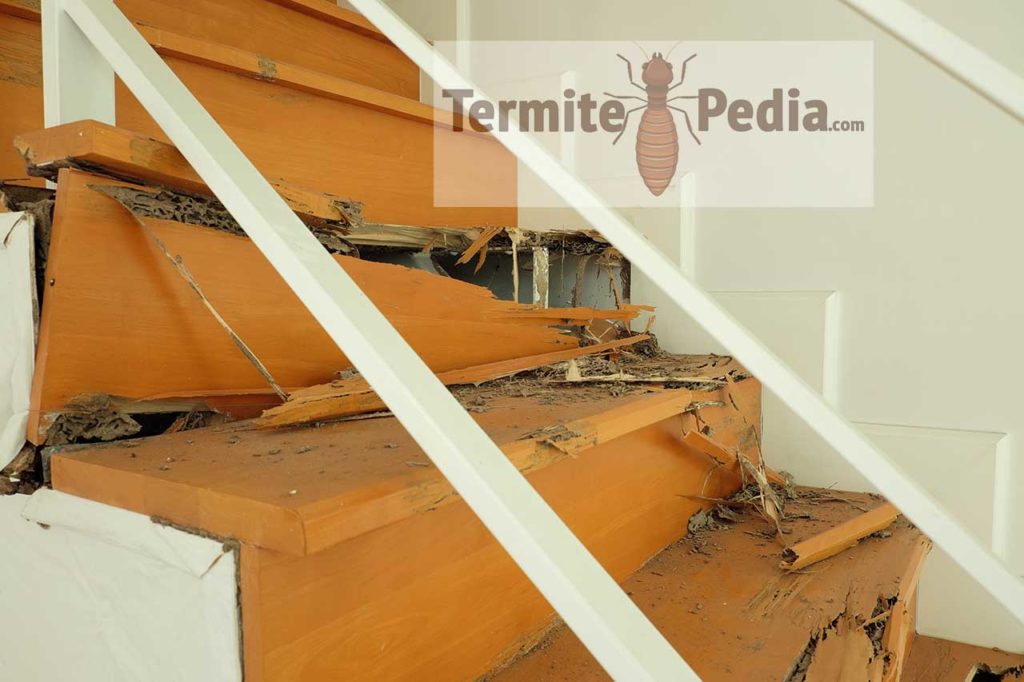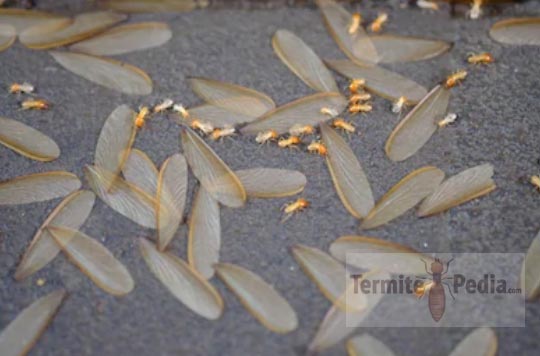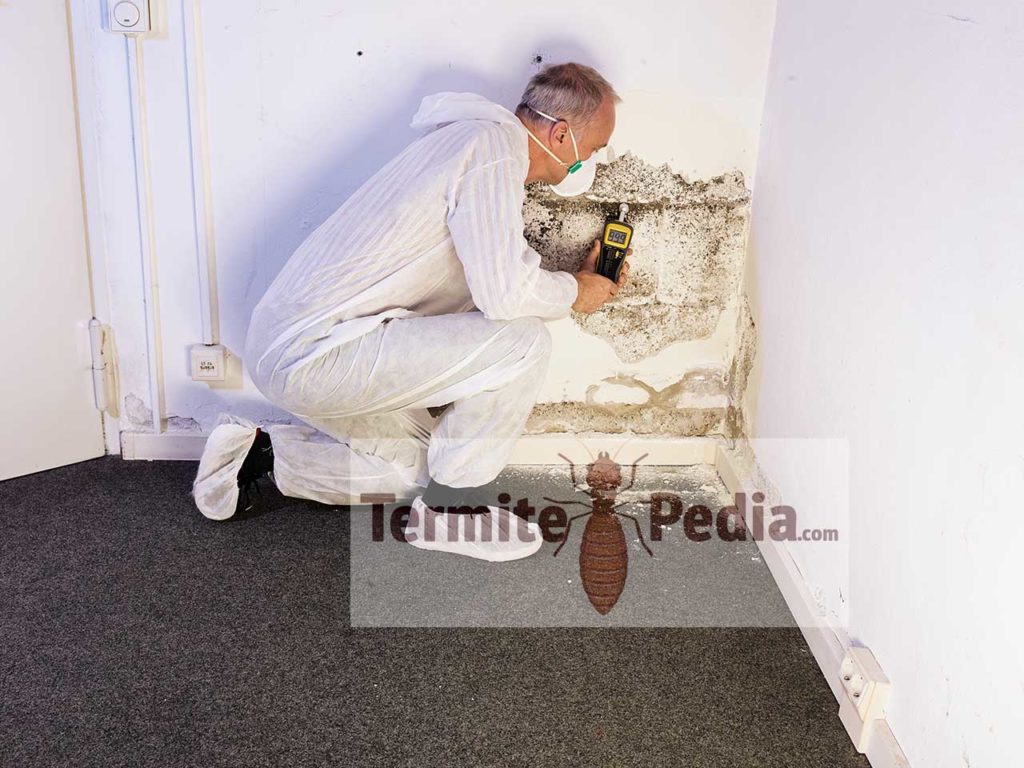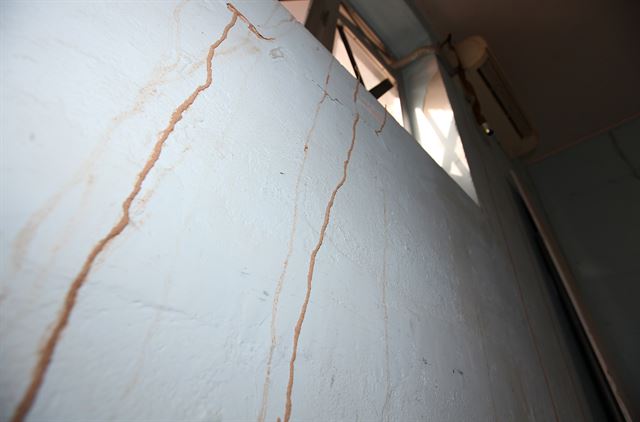
How To Get Rid Of Termites From Your Home – Fast!
People are very interested in discovering how to get rid of termites from their homes. They are a common problem, especially in the south, and are very costly if not taken care of on time, and effectively!
Left to their own devices they can utterly damage your structure. If you are interested in how to get rid of termites then here are a few pointers to get you on the right track.
How to get rid of termites – The Steps
You will first have to determine if you really have a termite problem. After that, you will have to identify the type of infestation. After a proper identification assessment, then you can consider exactly how to get rid of them.
There are places around the country where termites are common, and if you live in one of these areas, you are advised to get an annual inspection by a professional.
There are signs you can look for to signal an infestation. They include things like finding dead termites or the wings from swarming termites.

Another thing to look for is mud tunnels, also referred to as mud tubes, galleries or more accurately, termite tubes. These form around your foundation and protect the termites as they travel above ground.
Once these have been identified and properly located, then the professionals will come in.
1. Professional Termite Treatment
If you’re looking for the “how to get rid of termites” fast approach, then your best bet would be to leave it to the professionals to tackle. The professionals throughout the extermination process will be using highly professional tools and expertise to tackle the situation because they are the ones who truly know how to get rid of termites quickly, a bit more expensive.
There are two major types of termites that can infest your home: Drywood termites and Subterranean termites (also called tunneling termites).
Depending on several factors, like what kind, size of the colony, there are a few options you have when it comes to getting rid of drywood termites and one (least-stressful, in a way) is tenting for termites, which has to be done by a professional company.
Tenting is done by wrapping the house in a sealed tent and filling it with pesticide, then they use liquid nitrogen or heat to pump into the structure. It’s also a practice to use termite electrons that produce microwaves of high-voltage electrical currents into the affected lumber to zap the colony.
Tunneling termites are a bigger challenge. Getting rid of these pests is much more difficult and more expensive. There are no “how to get rid of termites” guides for the subterranean termites.
Usually, you have to call a pest control company. They will dig a trench around the foundation of the house. If there is a crawl space then they will dig the trench inside of the wall.
After the trench is dug it is then filled with a termiticide. They use one of two kinds of termiticides.
- One kind to repel the termites.
- The other kind kills them.
Poisoned bait will be laid out after the application of the termiticide, which guarantees the death of any lucky termites that survived the first dose. If there is concrete, then holes must be drilled into the slab, and the poison poured in to kill any termites underneath after all that the mud tunnels must be destroyed.
Be aware that homes with wells could be in danger of this kind of treatment by poisoning the water supply.
Also if there are drains near the house that might cause the pesticides to contaminate the city sewers, then this method might be prohibited.
If a cement slab is what your house sits on, exterminators have to dig into it and pour poisonous chemicals under the house. The presence of pesticides under the house makes people nervous, to say the least.
If the chemical-trench method can not be done then you have to just use termite baits or treat the dirt from the trench and refill the trench with it. This is usually more expensive and more tedious than liquid poison.
The best lesson on how to get rid of termite is prevention. Just make sure they do not have the environment to live in and ensure you termite bait and protect your house. You can’t take their food away, obviously, so other methods have to be used. Keep wood and debris away from your house and repair your leaks as soon as they are discovered.
Termite Repair Cost – How Expensive Will It Be?
If you think you have termites in your home, one of the first questions you’re going to have, apart from how to get rid of termites, is about the cost, how much it will cost. After all, treatment and repair of termite damage are often extremely expensive.

Termites can damage your home, and in only a short time, all your improvements could turn into a pile of sawdust. The cost to treat termite infestations and repair the damage they’ve done isn’t the same across the board, however. You’ll need to think about many things when you’re trying to figure out how much damage has been done.
Guessing on the price
The method of treatment you’re using, the type of termite, and the amount of wood in your home will be factors in your termite repair cost, as will the length of time the termites have been able to infest your home. Remember that you’ll need to find a termite removal service around your area that you consider trustworthy, as some may try to take you for a ride.
In towns, companies will probably have lower fees than ones found out of town, and if your inspection company, exterminator, or repair company has to travel a long way, you’ll probably have to pay extra.
If you’re thinking about buying a home in an area that is prone to termites, you’re definitely going to have to consider the possibility that it may be infested. Don’t simply rely on the seller’s statement that there is no damage or that there has been no infestation.
They may not be aware of problems, or they may be lying outright. Instead, be sure to have an inspector look over the house, and make sure that you have a contract with that person that allows you to hold them to their statements about damage. If you accidentally buy a home with damage, your termite repair costs could be quite high.
There are several different kinds of termites, from drywood types that infest relatively small areas and live above ground, to Formosan termites, which live in the soil below the house and can eat a truly enormous amount of wood in a single day.
Drywood species can usually be treated with spot treatments, but whole-house fumigation may be required. Their smaller colonies mean that they do less damage and that the termite repair cost associated with this damage is a lot lower.
Subterranean species, not all of which are as voracious as the Formosan type, live in the earth below the house. This makes them much harder to reach and requires special, professional treatments.
The traditional method involves creating a chemical barrier around the house using Termidor, which will kill any termites that encounter it. Digging up floors and creating trenches around the house may be required.
Termite Baiting stations have been used to decrease the numbers in a colony significantly. Both of these methods are expensive, and because of their location in the ground, these termites are much more likely to damage structural members and cause real problems, as well as high repair costs.
It’s impossible to say just what your termite repair cost will be. There are too many factors involved. However, one thing is true across the board. The earlier you deal with your termite problem, the less expensive it’s going to be.
Termites that have longer to work are going to make things more expensive. So, if you suspect that you have a termite problem, you need to deal with it right away either DIY it yourself or call an inspector and save your home professionally!
If you’d prefer to get your hands dirty and decide that the “least-stressful, most professional” route isn/t for you, then you head directly to number two, DIY termite treatment method.
2. Do it Yourself Termite Treatments
Once you have a termite infestation and are not sure of how much damage they have caused, then you must stop thinking of how to get rid of termites completely and contact your local exterminator immediately.
Pesticides and control are specialist jobs and should only be undertaken by professionals. The applications of the chemicals are not necessarily predictable or straightforward and you have to be aware of the life cycle of termites in order to do it effectively.
To treat underground is not easy and specialist drilling may be recommended. However, if you’re absolutely sure of the answers to certain questions like how long the infestation shad started and what kind of termites are present, then you can try the DIY method.
You can protect your outhouses and sheds, barns and fences yourself with liquid termite repellents (like the picture underneath). This would not be catastrophic if the termites got out of hand, but remember that termites not successfully treated will carry on until they have EATEN your house.
Going on by yourself with how to get rid of termites, you’ll need to be prepared, both emotionally, and otherwise, as a soldier preparing for a battle.
It is also possible to treat your wood after the house has been constructed and the efficacy of this depends on the strength of the chemicals used. This can be effective in the areas that have been treated but it may need specialist digging and it is only effective in specialized areas. Best results are obtained by drilling into the termite nests and injecting the chemicals.
Once the liquid deterrents have been applied then to be extra sure, you can use termite pellets which have been poisoned as a bait. However, this is not always as simple as it seems and they have to be near the termite nests and if you are not sure where the nests are located then a professional job will give you peace of mind and a guarantee.
Whilst termite eradication is expensive it is a far cheaper price to pay than unsuccessful treatment.
Termite Treatment at Home – What You Need To Know
You may ask, how do I go about termite treatment at home?
We all know that termites can be a big problem – especially species such as the intensely damaging Formosan subterranean termite. However, it can be hard to know what to do about them.
There are all sorts of DIY (do it yourself) ways of treating termites such as chemicals, professional exterminators and even tenting.
How do you know which is the best option for you? Here’s some basic information on the major termite treatments.
Termite Shields – Stop An Infestation Before It Happens
Prevention is one of the most important parts of termite treatment, just as the saying goes, prevention is better than cure. If you don’t have termites currently, you must take steps not to get them!
Preventing termites from entering the structure is one component of a good termite prevention plan, and termite shields can be used for this, along with other methods.
Termites cannot tunnel through metal, and they have trouble building mud shelter tubes on it. These metal termite shields are used in conjunction only with masonry or concrete walls and are made out of sheet metal. They also keep wood members from becoming damp and harboring termites, too.
DIY Termite Treatment At Home
Doing it yourself is a tempting prospect when it comes to termites. After all, many treatments are extremely expensive, and if you apply them on your own, you’ll at least be saving the cost of labor.
However, some forms of treating termites should be applied only by trained personnel. Otherwise, there are environmental and health dangers, plus the termites may not be COMPLETELY dealt with at all. Preventative treatments, arranging your home so that it won’t attract termites, and similar methods are the best ones if you want to do it on your own.
With that said, there are still some DIY methods to partly or completely handle an infestation, depending on the level of the infestation.
here are some tips on DIY termite treatment at home:
Termite Tubes – DIY Termite Treatment At Home

Termites create tubes of mud and fecal matter (also called termite tube, mud tunnel or galleries) in order to cross spaces that aren’t wet enough for them to survive in. Removing these tubes is one important step of termite treatment at home. Make sure they’re completely removed whenever you see them, and your home will be safer.
Termite Spray – DIY Termite Treatment At Home and Furniture care
What if you have termites in your furniture? Yes, termites can attack the furniture at your home once they find a way to get to. This is especially common by Drywood termites, although Subterraneans can do it too.
What do you do when you notice termites on furniture?
To tackle termites on furniture, first, you need to properly identify their presence. A giveaway sign is the termite frass or pellets, these usually would be around or under the furniture which is being eaten out.
Once you’ve discovered the frass, the next step is to prepare a suitable termiticide for them, and there are quite a few to use the infected furniture.
Termite sprays
Termite sprays (Amazon Link) are a commonly used topical application for termite control. These termiticides are poisons sprayed around the base of the house and in places where it’s though that termites may be dwelling.
They cannot penetrate into the wood in most cases and aren’t able to enter the termite nests especially if only sprayed once. This limits their effectiveness, as they won’t kill all the termites on their own. The use of termiticide sprays is one popular treatment for home DIY, but it must be done carefully, on multiple times within a 24hour period and should be used in conjunction with other treatment methods.
Another effective option to use on furniture is to use a termite foam, for example, Termidor foam (pictured below). These two options are among the best treatments for termite in furniture, and spot treatments.
Termidor (Amazon link included) is one of the most common types of termite sprays, but it is not the only one. Termite sprays are relatively inexpensive.
Termite Baits – DIY Termite Treatment At Home And Garden
Bait stations like Exterra and Sentricon are among the ways to deal with subterranean termites professionally, (there also a few others like these – Amazon link inside). What happens when these anti-termite measures are used is that a plastic tube, containing a piece of wood or other cellulose, is placed in your lawn or garden.
Usually, it’s placed in a place where an infestation is suspected. Then, these stations are checked to see if termites have visited them. If the wood in the station is damaged, it’s replaced with an appealing bait that’s laced with substances that disrupt insect growth.
The termites eat these substances and spread them around the colony, slowly wiping out its colony. Bait stations, although it can be quite expensive but are less toxic than many barrier methods.
Termite Traps – DIY Termite Treatment At Home
Termite traps are a method used mostly in Australia, but available in other countries, too. These above ground traps are loaded with cardboard, and allow you to see evidence of the termites inside. Once the termites have come into the trap, you can dose it, either killing the termites or allowing them to take poisons back to their homes, much like a bait station.
Organic And Natural Termite Treatments Methods
There are several treatments referred to as “natural” treatments. Some are more natural than others – for instance, orange oil comes directly from orange and other citrus fruits and is refined before use, while boric acid and other borate treatments do come from naturally occurring substances, but are still chemical treatments.
Termites in Garden – Treatment For Garden Termites
What happens when you notice termites in gardens or greenhouse? Do you call the professional exterminator, use a termite bomb, spray, or simply let “nature” be?
It’s no doubt that termites are a part of mother nature’s forces, but what happens when they become a nuisance? Remember termites don’t eat live plants or leaves, their presence in your garden means there’s either a food source or water there.
The most natural thing to do would be to evaluate your garden and remove the source, but in the unfortunate event when that’s too difficult to pinpoint? You’ll be happy to know that there are other natural or organic methods to get rid of termites, as the use of pesticides or termiticides may not be an option.
Orange Oil For Termites
Orange oil (Amazon link) is injected directly into timbers with drywood termite infestations and kills them quickly. This won’t work for subterranean termites, or for houses with large infestations of drywood termites, but it is pretty good and effective for small colonies. It can be costly, but not as much as tenting, and it’s much less toxic.
Beneficial Nematodes For Termites
Beneficial Nematodes:(Amazon link inside) These are one of the best 100% natural and organic termite treatment methods out there. Nematodes are tiny roundworms that locate and feed on insects, in this scenario, termites. It’s a very effective method for getting rid of termites especially in places where the use of strong poisonous chemicals is not recommended. Beneficial nematodes, once released, will also get rid of other insects in the area where is it used, and that’s a big additional win!
Diatomaceous Earth For Termites
Diatomaceous Earth (Amazon link inside) Diatomaceous Earth is another effective method of killing termites using organic and natural methods. These are 100% organic and non-toxic too, as they are usually labeled as “food grade”.
You’re probably asking, what is Diatomaceous Earth? Diatomaceous Earth, also called diatomites or abbreviated as D.E are fossil remains of diatoms, which is a hard-shelled aquatic creature.
D.E comes in a white powdery form, which has a super abrasive feeling and sharp on a molecular level, that when consumed by termites, “cuts” through them, thereby killing them off as they eat through the areas where the substance was applied.
Borates For Termites
Borates (Amazon link) are painted directly on the wood, and make it much less palatable to termites. This is most effective when it’s done before the home is built, but the spot treatment of older homes is still possible. Usually, other methods will need to be used as well. Borates are relatively inexpensive, but the process of using them is labor-intensive, which can drive costs up.
These are just short descriptions of the most popular methods of termite control. You can look deeper into any of them by following the links.
What are your thoughts on how to get rid of termites and DIY termite treatment at home?
When faced with termites in gardens, what other effective methods have you used?
Please let us know via the comment, thanks!







Superb article! Thank you for sharing all these vital information
Thank you! Glad you enjoyed it.